Sizes of aprons in the kitchen: what are they and how to calculate?

The kitchen is an important space for any apartment or house, therefore it is necessary to create a cozy and comfortable environment. In view of the specifics of using the room, it is important to choose the right finishing materials that will look beautiful and stylish, as well as provide ease of use and cleaning.
The most demanded and often used is the cooking area, therefore it must be equipped with a special protective apron, which can have a varied appearance, material and size that is required for a particular room.
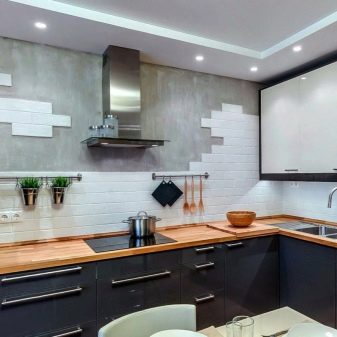

What do they depend on?
The design of each apartment or house is unique, as it is selected taking into account the tastes and preferences of the owners. However, there are still certain rules and canons, therefore it is important to know and use them. The most frequently used room for almost everyone is the kitchen, in connection with which the greatest attention should be paid to its arrangement. Before choosing furniture and creating some kind of concept, it is worth deciding on the working and dining area, which should be different.
The special feature of the cooking area is the presence of a special protective apron placed on the wall and preventing its pollution.
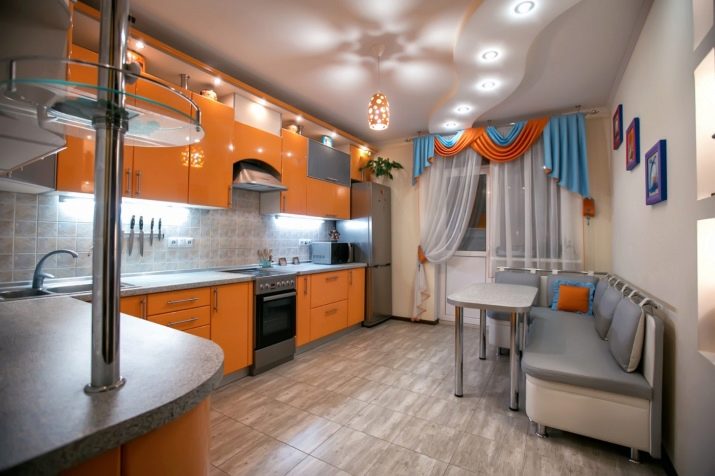
The apron can be made of various materials, have a variety of colors and dimensions. In the kitchen you can find aprons from:
- natural and artificial stone;

- Chipboard and MDF, indoors without open fire;
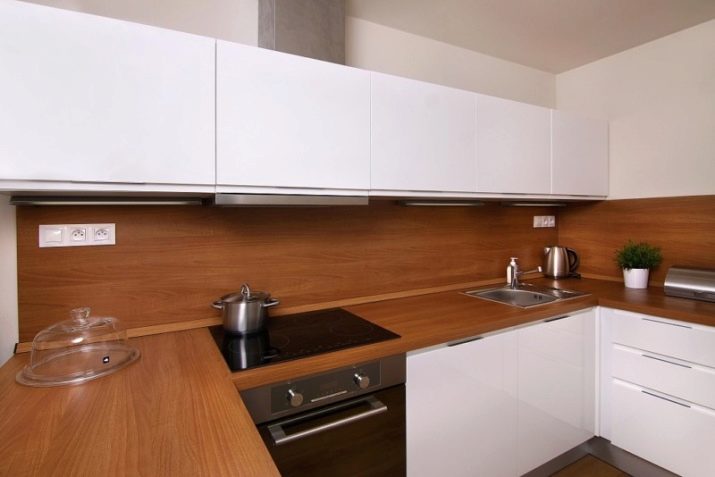
- traffic jams;
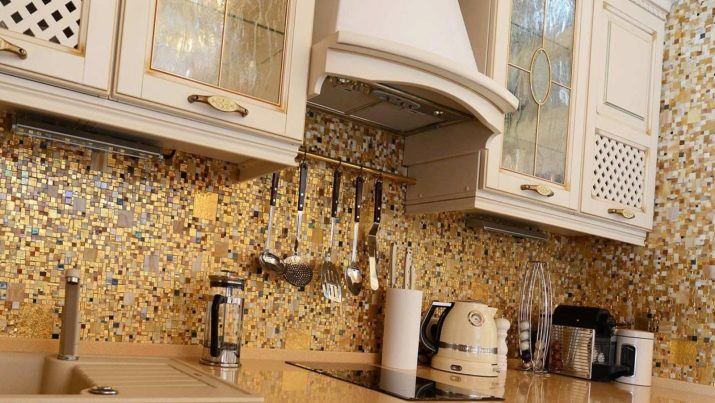
- laminate;

- plastic panels;
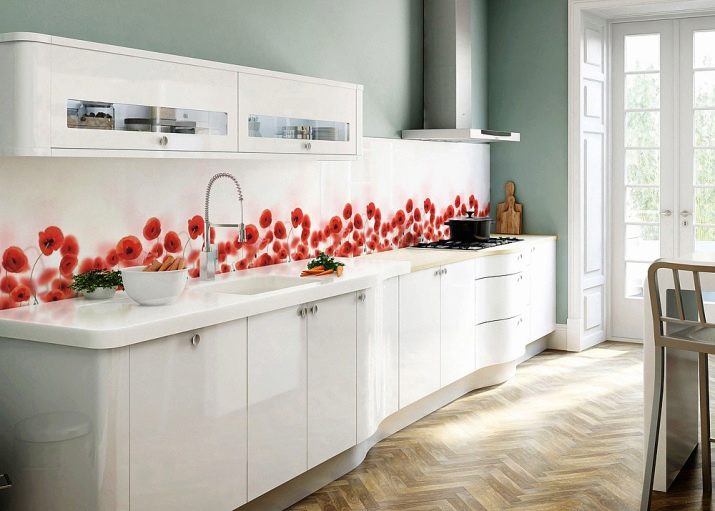
- stainless steel;
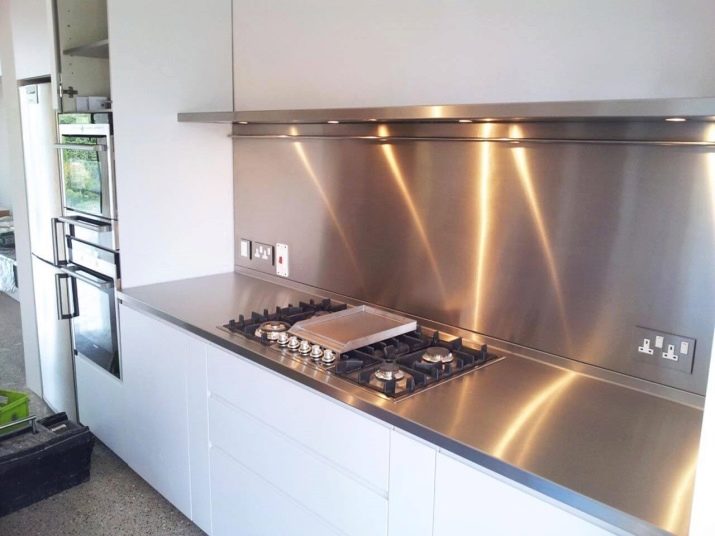
- mirrored glass;

- finishing bricks;
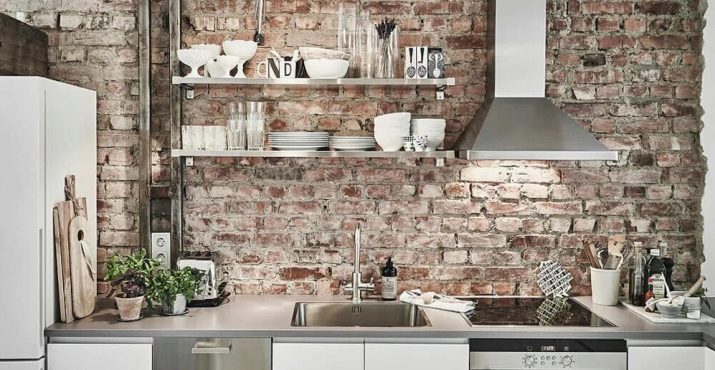
- ceramic tiles.
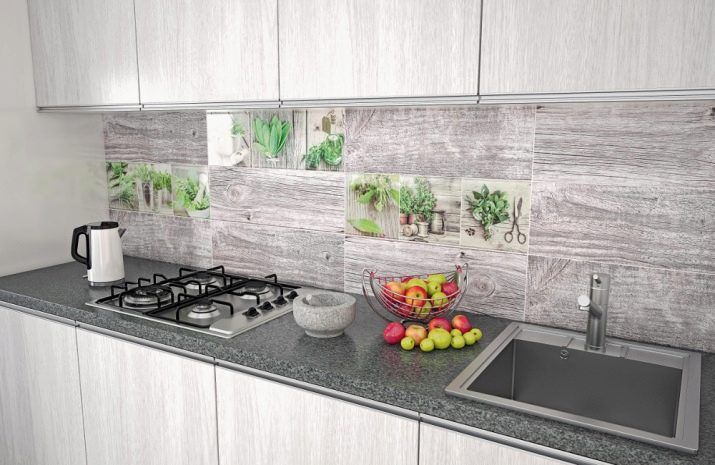
The choice can be made taking into account the characteristics of the kitchen itself and the budget that is available for its renovation. The color scheme is selected exclusively according to taste preferences, as well as in relation to the lighting of the room.
In a light kitchen, you can make a contrasting apron with dark elements; in a dark, poorly lit kitchen, it is advisable to mount a protective structure in light colors.
As for the size of the apron in the kitchen, then it must completely cover the wall in the work area, and also not interfere with the use of all wall cabinets and other furniture in the room. The selection of the dimensions of the protective area on the wall should be carried out before the purchase of the headset, if there is such a possibility, or it should be calculated for ready-made furniture. There are certain norms for the height and width of the apron, which must be taken into account when planning repairs in the kitchen.
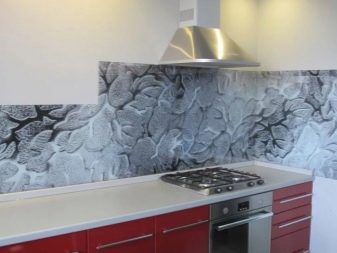
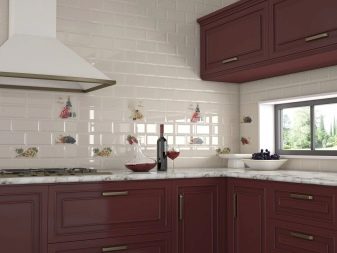
Standard sizes
Each business has its own standard, and apron styling is no exception. The indicators in this case look like this:
- the height of floor structures is usually 85 cm;
- the distance from the floor to the bottom of the wall cabinets must be at least 140 cm;
- the height of the hood may vary depending on its design.
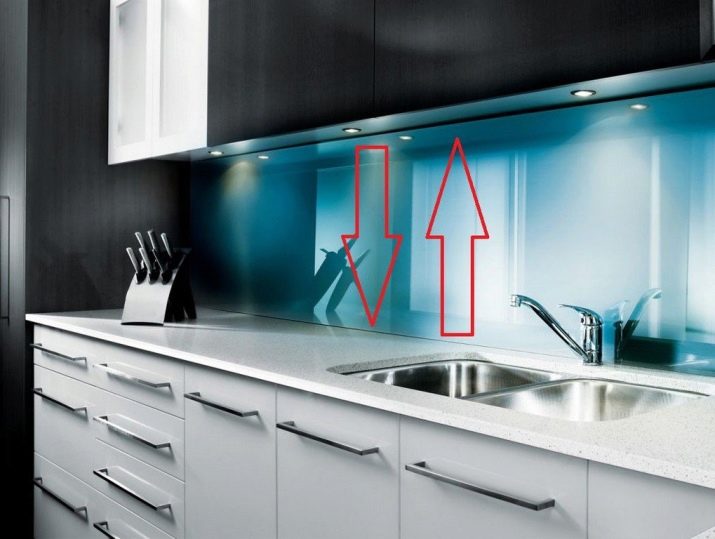
The height of the kitchen apron must be at least 60 centimeters in order for it to fully perform its functions. The main materials with which this element of the kitchen is laid out are made on the basis of such standards. The most popular ceramic tiles are 30 cm high and 20 cm wide, because two tiles will be enough to create the desired apron height.
Those who create a product other than tiles will have to spend more time and effort to adjust the material to the required standards.
For convenient use of the apron by all family members it is necessary to initially select all the components, taking into account the growth of household members. An important feature of the installation is a strict horizontal orientation without taking into account the floor and ceiling, which can be located at an angle. In such cases, it is necessary to make an apron with a margin, leading it over the countertop in order to align different parts of the room. When planning the placement of the protective zone on the wall, it is worth considering whether it will protrude relative to the wall, and how much, in order to correctly place the wall cabinets.
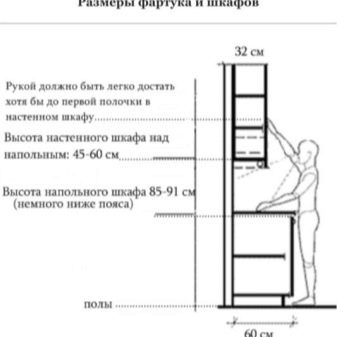
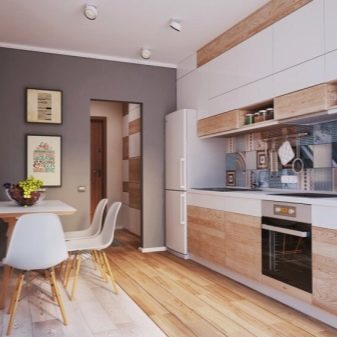
The width of the apron should be such as to cover the entire working area, as well as the adjacent territories, in order to protect them from splashes and dirtthat appear during cooking and dishwashing. If the sink is located in the corner of the kitchen, then the apron is made out only on the working wall, but also goes to the next one.
For a complete look, this element can be complemented by the same corner decor in the window area. The width of the apron is directly related to the work area, there is no need to create protection where furniture or household appliances are located, therefore in each kitchen, this issue must be resolved individually.
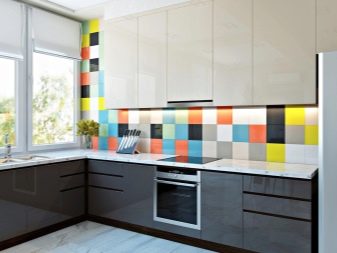
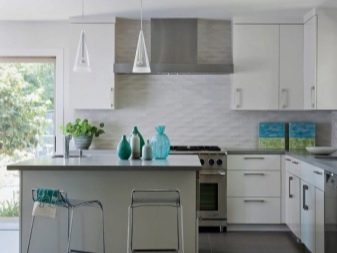
It is extremely rare that an apron is performed up to the floor or ceiling. If there is a separately mounted hood in the kitchen, then the area around it can be supplemented with an apron so that the space looks solid. In the case of a small amount of furniture or free-standing household appliances, the protective layer on the wall can be applied to the floor.
Often this is just a decoration technique, but in some cases it can be an opportunity to protect walls from contamination by pets and children.
The apron should be comfortable and functional, its placement should be clearly coordinated with the furniture set and household appliances... The thickness of the finishing material can vary significantly and depends on the strength of the impact of negative factors. The thicker the apron, the less usable space remains in the kitchen, however, materials that are too thin may not cope with the task, and the repair will need to start again.


Custom dimensions
The dimensions of the apron in the kitchen can be as standard, if all conditions accompany this, or vary due to various factors:
- the material from which the protection on the wall is created;
- dimensions of floor furniture;
- the size and location of wall cabinets;
- presence or absence of hoods, sockets, switches and other;
- the growth of the owners.
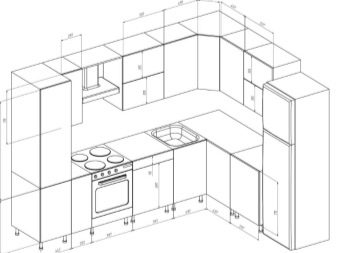
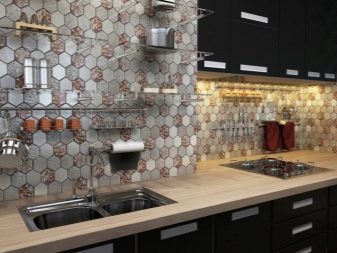
If at least one of these criteria stands out from the generally accepted norms, then the height or width of the apron may be completely different. For a hostess with a small stature, wall cabinets are placed 10-20 cm below the usual level for ease of use, which means that the height of the apron is reduced to 40-45 cm.
In an apartment where people with a growth above average live, furniture is placed taking into account these features, and is often made to order, which forces the size of the apron to be adjusted to the new conditions.
No less important is the material from which the protection on the kitchen wall is made. This can be ceramic tiles, which are most often used for these purposes. Its dimensions vary: 10x10, 15x15, 20x30 and 20x40 cm.The choice of a particular option depends on the dimensions of the product, therefore the choice, ease of installation, beautiful appearance and ease of use make tiles the most popular finishing material.
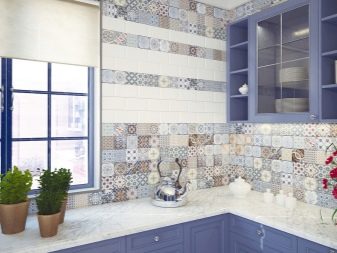
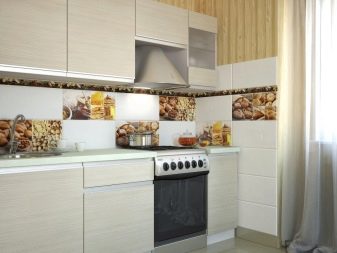
An apron in the kitchen can be made of tempered glass, which will not be inferior to ceramics in many respects. Such an apron is convenient to use, since it is easy to care for it, it protects well from any dirt and has an attractive appearance due to the possibility of tinting or even applying photo printing. The installation of such an apron should be made for specific furniture in order to correctly calculate the height and width of the material.
The protective structure should go a little on the hinged shelves and fall just below the table top in order to create a coherent and cozy composition, therefore there can be no errors with calculations, and the standard dimensions for glass will be irrelevant.
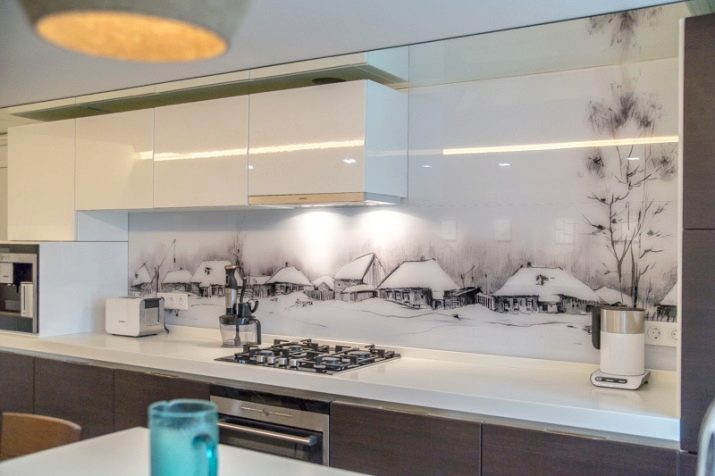
Apron made of plastic will be a suitable option for budget repairs and temporary protection of the surface of the kitchen wall from contamination. The height can be any here, which is dictated by the characteristics of the room, as well as the width of the plastic panels that will be mounted. It is advisable to make a flat work area that will be hidden behind the furniture, fully protecting the surface of the walls, giving the room a complete and neat look.
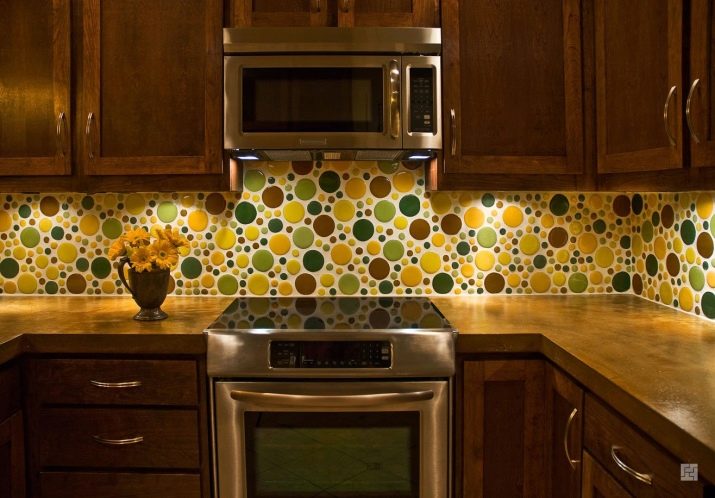
The dimensions of an apron made of artificial and natural stone are the most difficult to comply with, since the product will be created taking into account the tabletop of an existing headset and must exactly match it, creating an integral work area. Stone decoration is one of the most expensive therefore requires due patience and experience. In this case, it is impossible to use approximate measurements, since the junction of the apron and the countertop should be perfectly flat, and the upper edge should smoothly go into the hanging boxes, creating an integral and beautiful interior.

Each material is special in its own way, and you need to work with it skillfully, otherwise you will not be able to get a beautiful appearance of the product. Creating an apron for the kitchen is not the easiest thing to do, but with the right calculations, you can make high-quality protection that will last a long time and will be a real decoration of the room.
How to calculate correctly?
To determine the optimal size of the backsplash for the kitchen, you need to take into account many factors that help to calculate the required dimensions for any room. To determine at what height to start work, you need to know the dimensions of outdoor furniture and household appliances. On average, the table, stove and washing machine have a height of 80 to 90 cm, so the apron is placed at this height, making 2-3 cm of margin in order to gently lead the edges behind furniture and appliances.
When calculating the height of the product, it is necessary to check the evenness of the floors, for which the dimensions are carried out along the entire length of the room, where a protective layer will be created, retreating no more than 50 cm between the points.If the floors are even, then the lower boundary will be determined quickly, and in the case of uneven floors, it is necessary to calculate the arithmetic mean and place the apron at that level so that it is evenly located behind furniture and appliances.

The upper border of the apron is calculated using information about the height of the wall cabinets, which are usually mounted at a level of 135-155 cm from the floor level. In this case, you also need to make an allowance of a few centimeters in order to hide the protective zone under the hinged shelves. It is the distance from the countertop to the hanging furniture that will regulate the width of the apron: 135-80 = 55 cm or 155-80 = 75 cm.
Particular care should be taken when working on a kitchen with an autonomous cooker hood. Based on the height of the stove, which is 85 cm, the lower border of the apron is calculated, and the distance between the hob and the hood should not be less than 75 cm (or 65 cm for electric stoves), which makes it possible to calculate the upper border of the apron: 85 + 65 = 150 or 85 + 75 = 160... These are the minimum indicators below which the hood cannot be placed, and therefore the apron.
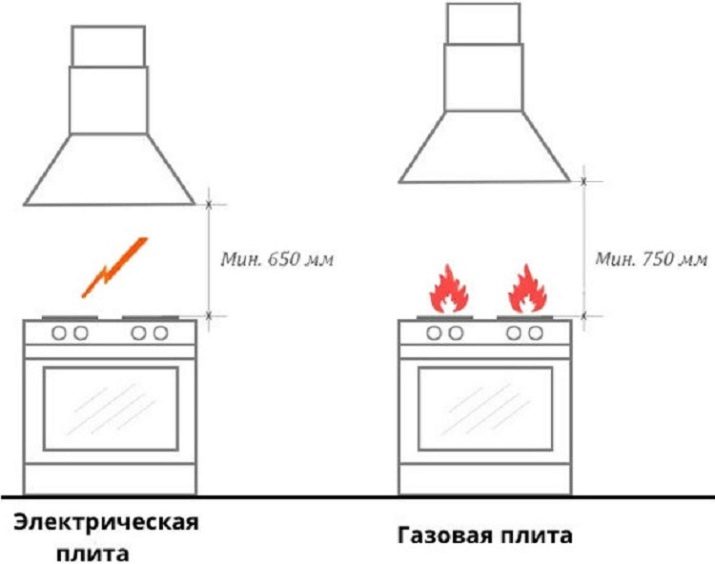
The width of the protective product can be different, at the minimum, it should cover the sink area, at the maximum, it should pass through the entire working part of the kitchen. If the upper shelves have different heights, or household appliances are not placed in a row with them, then the apron should repeat all the transitions, creating a single ensemble, allowing you to quickly and conveniently take care of the entire kitchen.
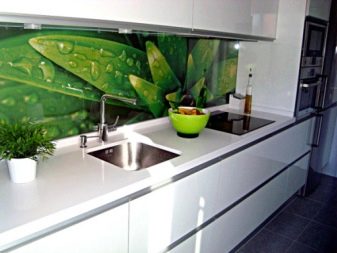
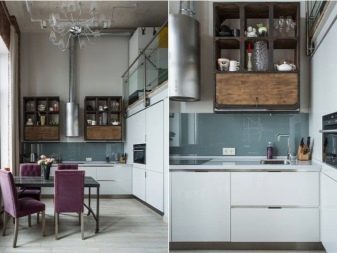
For information on how to choose an apron for the kitchen, see the next video.








